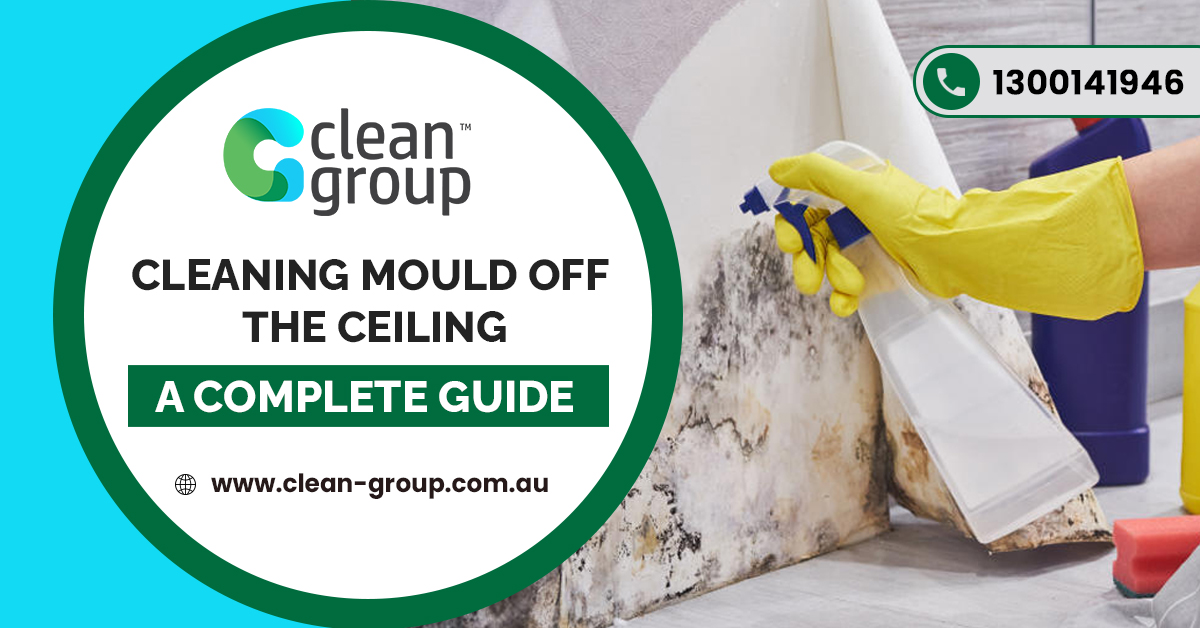Mould is annoying, and while it might seem manageable and harmless as a household problem, it could turn into something health-threatening and very complicated. Ceilings and walls seem to be the favorite growing spots for this substance and enough to destroy the structure of the material if proper commercial cleaning measures are not taken. Knowing what those are and how to use them correctly can save you a lot of money and even prevent future complications. Let’s learn more!
What’s Mould?
Mould is a term that refers to various fungus types that prefer places with high humidity to get their food. Those are their favourite growing spots, and these likely areas that grow mould are in the ceilings and walls of kitchens, bathrooms, window frames, and garages. They especially enjoy parts of the home that are poorly ventilated, which is something to remember!
The Dangers of Mould around the Windows and Ceilings
Though mould is essential to biodegrade organisms in nature, it’s often dangerous for people living in confined spaces. The threat actually comes from the mould spores released by the fungus. They’re easy to inhale and virtually invisible to the naked eye.
If you’re constantly exposed to mould, you might notice frequent headaches, respiratory problems, and allergies. Some people even develop chronic conditions, such as rhinitis or asthma!
What Caused the Mould to Appear on the Ceiling?
Mould often appears on the ceiling because of dampness caused by roof leaks and damage, bad ventilation, high humidity levels in the home, condensation, and cooking. Once it shows up, the mould can spread quickly, even faster than it might outdoors.
Therefore, the second you see greenish or black stains on the ceiling, you must act quickly to prevent more ceiling contamination.
There are different types of mould that might impact your health. Mould with a green or brown colour might cause mild reactions, such as sneezing, skin irritation, and the like. However, black mould is highly toxic to humans. It’s not hard to see it, and most people require professional help to get rid of it completely from their homes.
Prevention of Mould Formation
Overall, the best way to eradicate mould is to prevent it from growing in your home at all. Now that you know this is the problem, you can avoid getting a mouldy ceiling by using appropriate precautions.
Prevent mould from forming on the walls and ceilings by doing these things:
- Throw out Mouldy Food – If you find anything with mould on it, remove it safely as soon as you can
- Avoid Drying Laundry in the Home – The extra humidity from line-drying your towels and clothes in the house could cause mould formation.
- Schedule Thorough and Frequent Cleaning Sessions – You may want to hire a professional cleaner, but you should clean your home from top to bottom each week.
- Improve Ventilation – Many homes don’t allow moisture to escape easily. You may need to use fans or dehumidifiers in the house to suck out the extra water in the air.
- Install Insulation for External Walls – If the walls are constantly exposed to water or in shady spots, you need extra insulation to protect them.
- Install Gutters and Plumbing – Using gutters to keep water away from the foundation can prevent mould. Make sure you repair any leaks as soon as you can!
- Perform Routine House Checks – If you live in a rental, it’s best to check the home periodically because mould can be found during routine inspections.
Cleaning Mould from the Ceiling
Cleaning mould off the ceiling is a tough job, and it requires persistence. In most situations, one cleaning isn’t sufficient. You’re likely to need appropriate cleaning products and the right equipment.
The tools you need for removing mould from the ceilings include:
- Bucket of water
- Spray bottle
- Safety glasses
- Sponge
- Mask
- Rubber gloves
Eliminate the Mould Source
The efforts to eliminate ceiling mould are pointless if you can’t find the source and remove it first. Mould doesn’t just appear without a reason. Therefore, you must inspect your roof for possible damage and holes.
If the mould affects the walls, too, it could be from a pipe leak. Sometimes, mould remains hidden in the walls of the home, growing there without anyone noticing. Therefore, if you suspect that’s the cause of your dark stains, it’s crucial to call a specialist immediately.
Clean the Mould from the Ceiling
Once you’ve got protective equipment on, it’s time to take action. You may have to try different methods for killing the mould, and here are some effective options:
Chemicals
Various cleaning products specialise in mould eradication. Most of these chemicals use bleach to get the most effective results. Therefore, you can pour some chlorine bleach directly into a spray bottle and spray the mouldy areas of the ceiling. Pay close attention to the corners because they’re hard to clean.
It’s best to open the windows of your home so that the toxic fumes can get out. Let the bleach sit on the stains for 30 minutes or so. Everything should be erased just from that, but you might have to scrub the spots with a sponge, too.
Rinse the entire area with water, letting the ceiling air dry. Please remember that bleach is a very strong chemical, so it’s dangerous to the skin and respiratory system.
Eco-Friendly Removers
If you don’t like the idea of chemical usage, you can try white vinegar and baking soda. Separately, each one can remove fungal colonies, but they’re more effective together. Mix a ratio of two-to-one of white vinegar and water. Then, add a few tablespoons of baking soda to the mixture. You may use some tea tree oil for the smell.
A foam forms as the vinegar reacts to the baking soda. Spray that solution on the mould, and let it work its magic. Then, rinse with water!
A Reminder
Mould is very stubborn, so you may have to repeat the cleaning process many times. Unless you eradicate the source of the problem, the mould just continues coming back. Check the area each day to make sure it’s gone.
Conclusion
This guide for cleaning mould off the ceiling can help you eradicate the mess. You also learned about ways to prevent mould from appearing in the first place. It’s best to take care of the situation immediately, but you might need professional assistance from a mould removal specialist.

